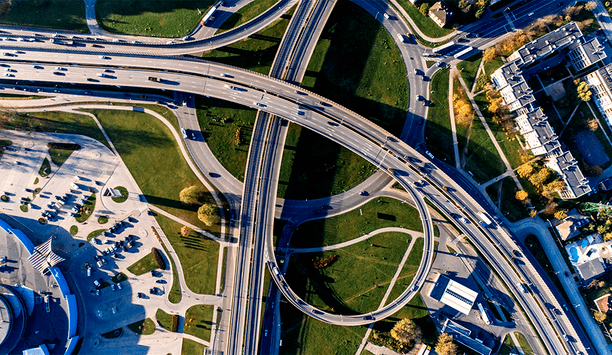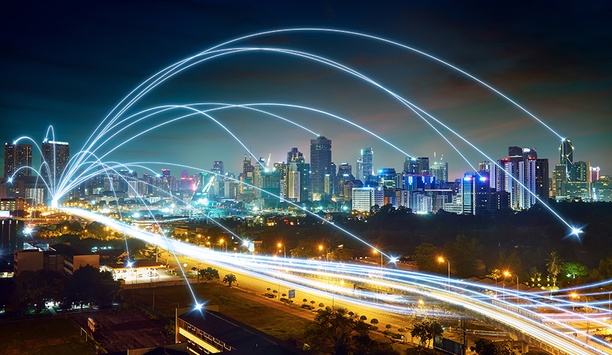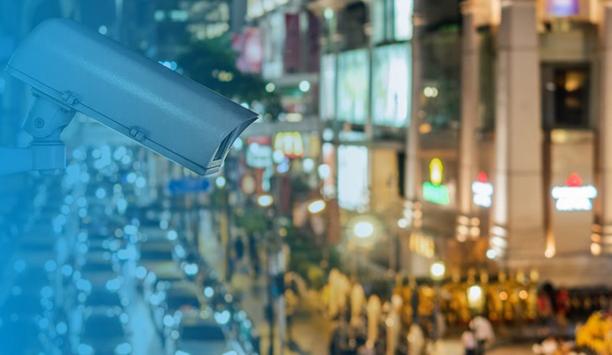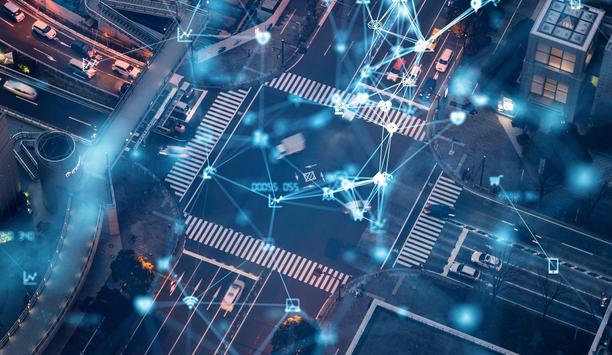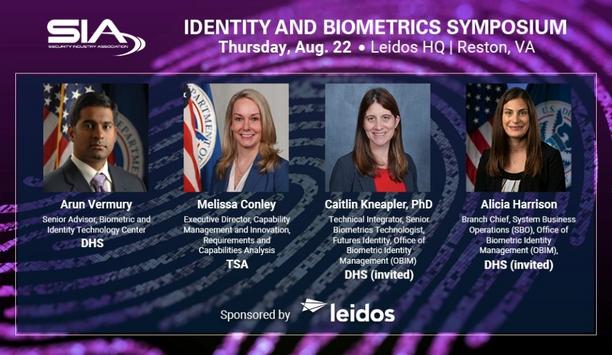Public security - Expert commentary
With the recent tragic events in Florida, it’s evident that schools require more tools to help ensure their students’ safety. With that, school and municipal officials all over the country are looking for more advanced ways to combat gun violence. While there is no perfect solution for the myriad of threats and emergencies with which our schools are confronted, many have looked to technology to help improve communications before, during and after incidents. For schools across the...
Video surveillance across the world is growing exponentially and its major application is in both public safety and law enforcement. Traditionally, it has been fixed surveillance where cameras provide live streams from fixed cameras situated in what is considered strategic locations. But they are limited in what they can see given by their very definition of being "fixed." The future of video surveillance includes the deployment of more mobile video surveillance with the benefits it offers. Ins...
When asked about what the market should be thinking about in 2018, I am left offering an answer that serves as an urgent call to action: prepare yourself for change! The security industry is soon likely to see a dramatic shift from the traditional segmentation of commercial and residential security. Smart phones, mobile technologies, cloud computing, and having everything provided ‘as a service’ in peoples’ lives means users of buildings have a new set of expectations. In many...
Throughout the UK there are many examples of smart city transformation, with key industries including transport, energy, water and waste becoming increasingly ‘smart’. A smart city is a one that uses information and communication technologies to increase operational efficiency, share information with the public and improve both the quality of government services and resident welfare. Smart access is an important step forward in providing technologically advanced security manag...
While US market is being sensitive about cybersecurity through their popular camera products, European countries and the UK are preparing for the new privacy regulation to apply in two months’ time. But how would these challenges affect the global security market? What are the main problems in it for the manufacturers? What should investors in security industry look at right now? We’ve all recently heard about acquisitions of market-leading companies by technological ‘monsters...
Today’s security professionals are tasked with protecting the entirety of a facility or campus from every possible threat. It’s a big task, given the range of solutions available; from cybersecurity to prevent hacking, to video surveillance to monitor the goings-on within the facility, to the physical security of the building itself. For most businesses and schools, keeping the entrances and exits to a building secure is an extremely high priority—when an individual cannot ge...
Most cities have at very least a plan and in most cases an existing program to make themselves safe cities. Increasingly, cities around the world are transitioning to become smart cities: urban areas where security solutions work in unison with other systems, extending the benefits of technology beyond security and into other city operations. Whilst this transformation has yet to become a widespread the next crucial transition—from smart city to cognitive city—is already appearing...
Until recently, data laws have differed from one country to the next. This meant that for those organisations conducting business or protecting assets abroad, they needed to localise both their infrastructure and policies dependant on the country they were operating in. However, with the impending arrival of the EU GDPR (General Data Protection Regulation), which comes in to force on the 25th May this year, all of that will need to change. Data management in CCTV surveillance Surprisingly, des...
The air travel industry has evolved from one commercial passenger on the first commercial flight in 1914 to an estimated 100,000 flights per day. According to The International Air Transport Association (IATA), the total number of passengers who flew in 2017 is expected to reach 3.7 billion. But it’s not just people who fly. Each day, more than $18.6 billion of goods travel by air, which represents one-third of all world trade, by value. Meanwhile, the aviation industr...
In 2017 we saw a lot of new construction projects, and many existing buildings upgraded their security systems to include high-resolution cameras and better-quality recording systems. Because the economy is stronger, many businesses and municipalities increased their security budgets for large-scale and public projects due to terrorism threats in public places. Smart cities became more popular One of the bigger trends we saw in 2017 is the growing popularity of smart cities...
Over the past year, there was an unprecedented rise in drone incidents. Drones were unwelcome at and threatening the physical and cybersecurity of defence organisations, stadiums, corporations, and data centres, among organisations with critical infrastructure. Legislation is only just emerging now, and laws protecting airspace are hard to enforce, especially if a pilot is unaware of the risks of their flight or is flying with malicious intent. Laws can be circumvented, but detection technology...
2018 will start to see facial recognition and other biometrics used in a combination of ways, but I’d like to look even further into the future. I believe that facial recognition will be utilised on a large scale and that it will be very hard to enjoy the enhanced speed and simplicity of travel and financial transactions of the future without relying on biometrics. Biometric ticket and passport For example, when you travel to another country your face will be your ticket and passport.&n...
An increase in spending on security, more focus on data security, higher demand for integrated solutions, and steady progress to move beyond the pixel race were key trends in 2017. As we look forward to 2018, we will continue to see development in these areas as well as greater impact of the Internet of Things (IoT) on the video security market. Potential of video security data More and more, users are realising that the real issues in video security are not about pixel counts. Managing incre...
Last year, Genetec predicted that cybersecurity would be taken much more seriously as the Internet of Things (IoT) opened more doors for hacking and network take overs. We also predicted that that there would be an increase in the adoption of Software as a Service (SaaS), expanding choice and convenience from new ownership models via hybrid (on-premises and Cloud) and Cloud-only models. Cyber Accountability awareness 2017 was also a year of awareness about ‘Cyber Accountability’....
During 2017, we’ve enjoyed stable economic growth for a number of years now; we’re not running into as much resistance for security entrances as we did, say, seven to nine years ago. Hardening perimeters against active shooters Compared to other security products such as cameras and card readers, security entrances are a big investment and considered somewhat of a luxury: during downturns we’re among the first to hit the “cutting room floor.” Now, however, fueled...
The term “smart city” gets thrown around a lot nowadays, but as different technologies that strive to be defined in this way are adopted by different countries globally, the meaning of this phrase gets lost in translation. The simplest way to define a “smart city” is that it is an urban area that uses different types of data collecting sensors to manage assets and resources efficiently. One of the most obvious types of “data collecting sensor” is the video ca...
News of cyberattacks seems constant these days. Recently, Equifax, a US-based consumer credit reporting agency, announced that a private customer data breach impacted 143 million people. Earlier this year, 1.5 million connected cameras around the world were hijacked in an unprecedented DDoS attack. As cyber-attacks become more rampant, it’s hardly surprising that governments are stepping in to hold organisations more accountable. One of the most recent examples of this is the European Un...
A tipping point is defined as: “The point at which a series of changes becomes significant enough to cause a larger, more important change”. In the same way that IP video changed surveillance a decade ago, our industry is now feeling the impact of recent developments in Artificial Intelligence, Machine Learning, Deep Learning, Big Data, and Intelligent Video Analysis. Keyword definitions Let’s start with a few more definitions. Artificial Intelligence (AI) deals with the sim...
The threat of international terrorism has changed the way the domestic security industry thinks about protection, just as much as it has for national security services. Whilst violent attacks and terrorism were once predominantly aimed at government, military or political establishments, an uncertain global political climate means the ability to rapidly lock down facilities has risen to the top of any organisation’s security wish list. In reality though, just how easy is it for most organ...
When we contemplate where and how our food is made, cleanliness and hygiene are typically at the top of the list of necessities. And when it comes to production facilities, strict regulations and sanitation requirements are in place to ensure that the highest levels of food safety are met. This white paper by Oncam explores the different aspects of food safety and defence in the production, manufacturing and catering environments. It also offers practical guidance to the types of food cer...
After a lot of studying and getting ready for what seems like an endless stream of exams, teachers and students alike will enjoy having some much-needed time off — whether it’s just for a weekend, a break during the school year or the long summer holidays. Schools that are left empty for a sustained amount of time obviously increases the risk of arson attacks, thefts and vandalism. Staff members at an establishment should therefore work through this checklist before they leave the c...
Today ‘terrorism’ has become a word we use and hear every day. The goal of terrorism is a media product - information delivered to nearly every house in the world. So, the weapon of terrorism is information. Therefore, the way we defend and prevent terrorism must also be based on intelligent processing of information - and an early awareness of potential threats and effective preventive action may eliminate most attacks. Video analytics, automated surveillance and AI decision-making...
There have been many changes in the healthcare environment over the past decade. The Affordable Care Act has been established, severe weather events are on the rise, violence along with active shootings continue to increase, behavioural health patients present treatment challenges and hospitals continue to consolidate to increase purchasing and service capabilities. Over the next decade, healthcare will continue to transform. Emphasis will be on financial reform, violence response, emergency pre...
A new study reveals that intelligent fire detection systems have the potential to unlock more than 30 percent cost-savings on routine maintenance checks through real-time, data-driven remote monitoring. Kevin Mears, Product Manager for Kentec Electronics, describes how remote monitoring and predictive maintenance can meet the competitive challenges of the digital age. Leading economists have identified the convergence and synergies delivered by The Internet of Things – the interconnection...
Sea ports have a long tradition of handling important cargo, including equipment for oil and gas fields. These critical sites require complex security to protect vulnerable areas such as storage locations and unloading areas, as well as monitoring the surrounding waterways for emergency situations. Often, upgrading these sites with a future-proof security system can prove challenging, as there are likely to be expansive legacy systems in place. New systems may also need to be integrated w...
In today’s world, businesses face a growing threat landscape. Looking back on just the past few months, there have been increased incidents of workplace violence (the recent New York city hospital shooting), terrorist activities (London Bridge attack, Manchester attack), and cyberattacks (Petya and WannaCry). While critical events have become more frequent, more complex, and costly to businesses, organisations’ emergency communications systems, plans and processes have remained surpr...
For many frequent flyers, the relationship between flyers and the Transportation Security Administration (TSA) has been at times, turbulent. For the better part of the last two decades, going through airport security has been met with groans over long wait times as flyers are encouraged to get to the airport earlier and earlier. TSA Lean Six Sigma tactics reduce wait time However, the tide may be turning a bit, as recent reports have shown a decline in TSA’s wait times, which can be att...
Can you imagine what it would be like if you could only look at your CCTV cameras eight hours after an incident, when your security team finish their shift? That is what 99% of current body cameras offer. Most body cameras can only record video, which limits them to settling arguments after the fact – who said what first in an altercation with the police? What sparked an incident with the door security team at a nightclub? This leads to a curious asymmetry of video and immediacy between m...
It seems schools still need to be alert when it comes to the risk of terrorism. Following a recent security threat, Bury College has set an example that schools across the UK need to be aware of the threat of terrorism. As reported by the Manchester Evening News, the incident at the Great Manchester college saw the facility being put in lockdown as a precaution before an evacuation took place. Hundreds of staff and students were caught up in the event. Bury College released a statement followin...
Today, almost every employee carries with them a smart device that can send messages, capture, and record images and increasingly live-stream video and audio, all appended with accurate location and time stamping data. Provide a way for staff to easily feed data from these devices directly to the control room to report an incident and you have created a new and extremely powerful ‘sensor’, capable of providing accurate, verified, real-time multi-media incident information. You need...

